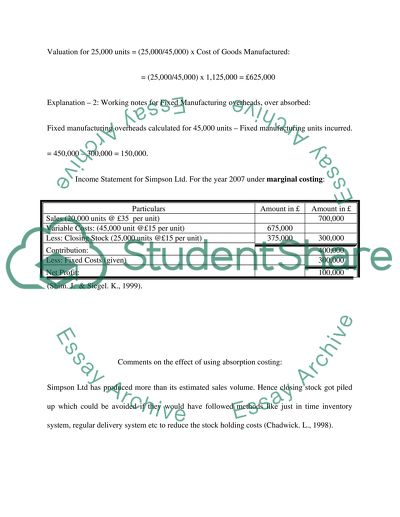Cite this document
(Calculation of Absorption Costing and Marginal Costing of Simpson Ltd Assignment, n.d.)
Calculation of Absorption Costing and Marginal Costing of Simpson Ltd Assignment. Retrieved from https://studentshare.org/finance-accounting/1554247-absorption-costing-and-marginal-costing
Calculation of Absorption Costing and Marginal Costing of Simpson Ltd Assignment. Retrieved from https://studentshare.org/finance-accounting/1554247-absorption-costing-and-marginal-costing
(Calculation of Absorption Costing and Marginal Costing of Simpson Ltd Assignment)
Calculation of Absorption Costing and Marginal Costing of Simpson Ltd Assignment. https://studentshare.org/finance-accounting/1554247-absorption-costing-and-marginal-costing.
Calculation of Absorption Costing and Marginal Costing of Simpson Ltd Assignment. https://studentshare.org/finance-accounting/1554247-absorption-costing-and-marginal-costing.
“Calculation of Absorption Costing and Marginal Costing of Simpson Ltd Assignment”, n.d. https://studentshare.org/finance-accounting/1554247-absorption-costing-and-marginal-costing.


